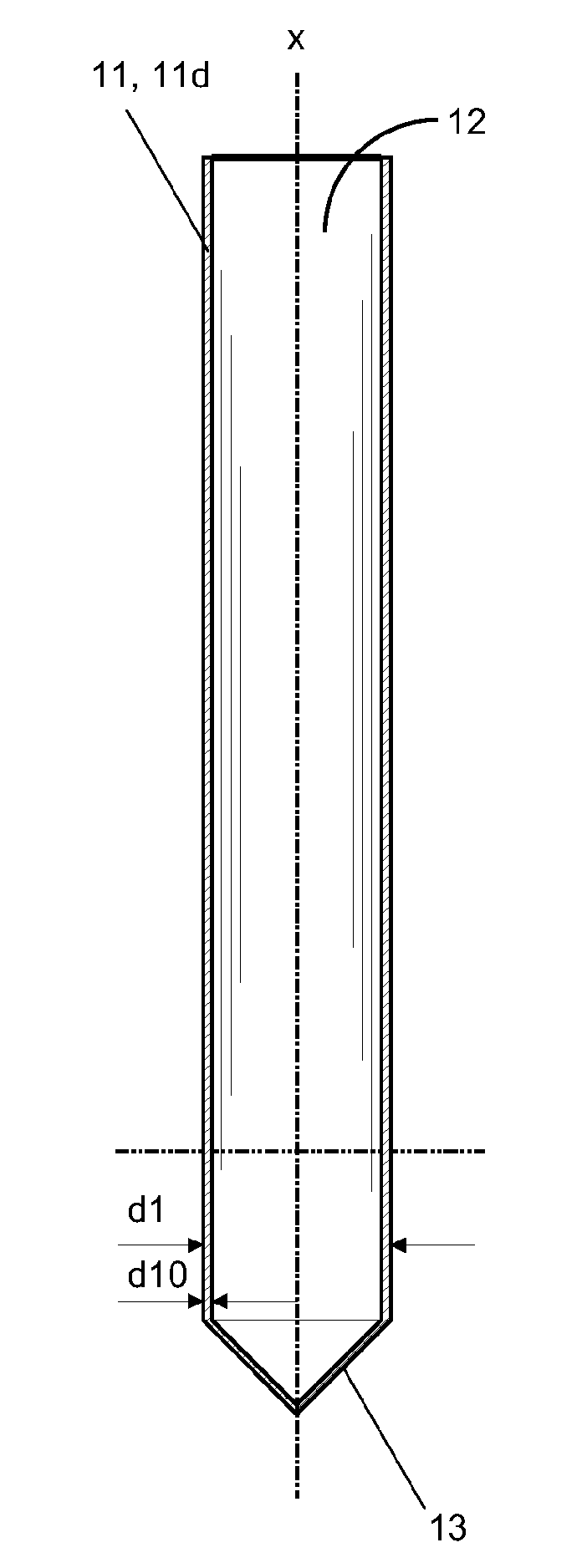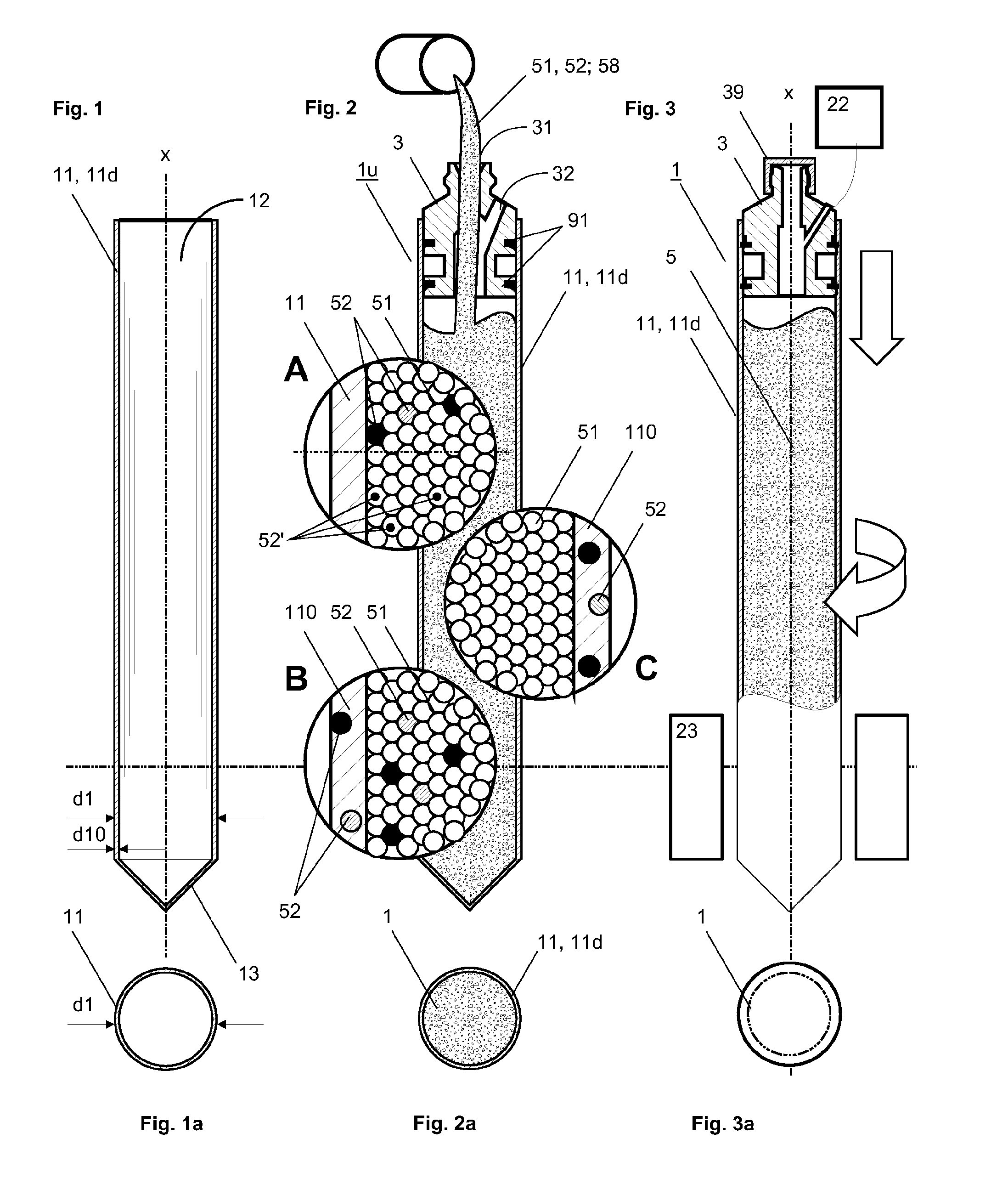Method for fabricating a preform, a preform, an optical fiber and an amplifier
a technology of preforms and optical fibers, applied in the field of methods for fabricating preforms, preforms, optical fibers and amplifiers, can solve the problems of reducing the amount of power present in the optical signal, affecting the signal-to-noise ratio of an amplifier-based communication system, and not necessarily providing higher gain, so as to achieve low cost, improve the effect of performance and low cos
- Summary
- Abstract
- Description
- Claims
- Application Information
AI Technical Summary
Benefits of technology
Problems solved by technology
Method used
Image
Examples
Embodiment Construction
[0100]FIG. 1 shows a primary silica (SiO2) tube 11 having a longitudinal axis x, an outer diameter d1, a wall diameter d10, an interior space 12 and a closure 13 at its lower end, which is preferably made as one piece together with the primary silica tube 11. Optionally, as shown in FIG. 2, e.g. magnified sections B and C, the primary silica tube 11 may contain, enclosed in its walls, A / A-material 52 of one or numerous sorts, for purposes that are described below.
[0101]FIG. 2 shows the silica tube 11, 11d of FIG. 1 with an adjoiner 3 at its upper side comprising a first channel 31, through which primary silica grain 51 or an SiO2-A / A mixture 58, which will be described below with reference to FIG. 15 is filled into the interior space 12 of the silica tube 11. FIG. 2 further shows different options A, B and C of using a silica tube 1d and primary silica grain 51 that are differently doped with A / A-material 52, thus resulting in different localisations of different selectable A / A-mate...
PUM
| Property | Measurement | Unit |
|---|---|---|
| temperature | aaaaa | aaaaa |
| temperature | aaaaa | aaaaa |
| size | aaaaa | aaaaa |
Abstract
Description
Claims
Application Information
 Login to View More
Login to View More - R&D
- Intellectual Property
- Life Sciences
- Materials
- Tech Scout
- Unparalleled Data Quality
- Higher Quality Content
- 60% Fewer Hallucinations
Browse by: Latest US Patents, China's latest patents, Technical Efficacy Thesaurus, Application Domain, Technology Topic, Popular Technical Reports.
© 2025 PatSnap. All rights reserved.Legal|Privacy policy|Modern Slavery Act Transparency Statement|Sitemap|About US| Contact US: help@patsnap.com



